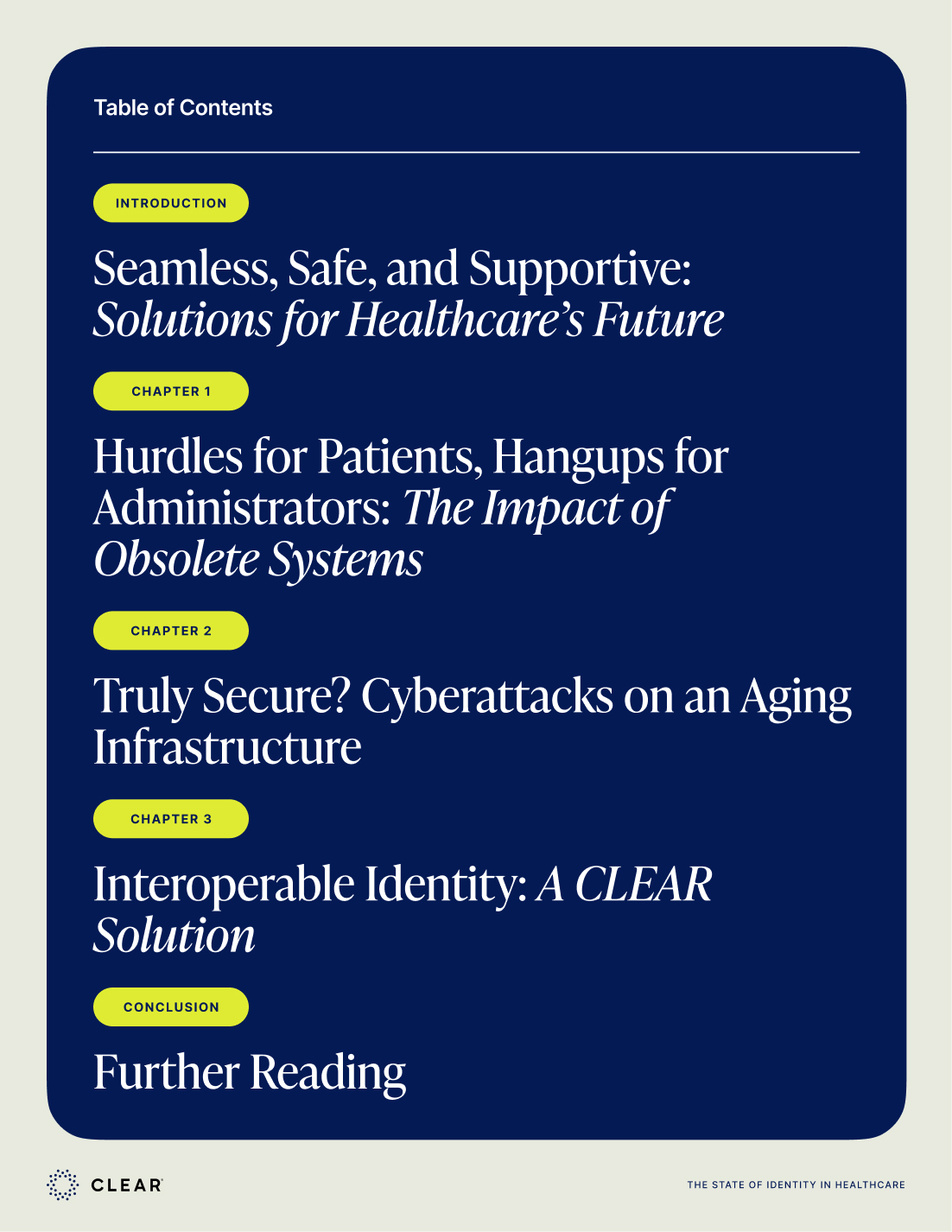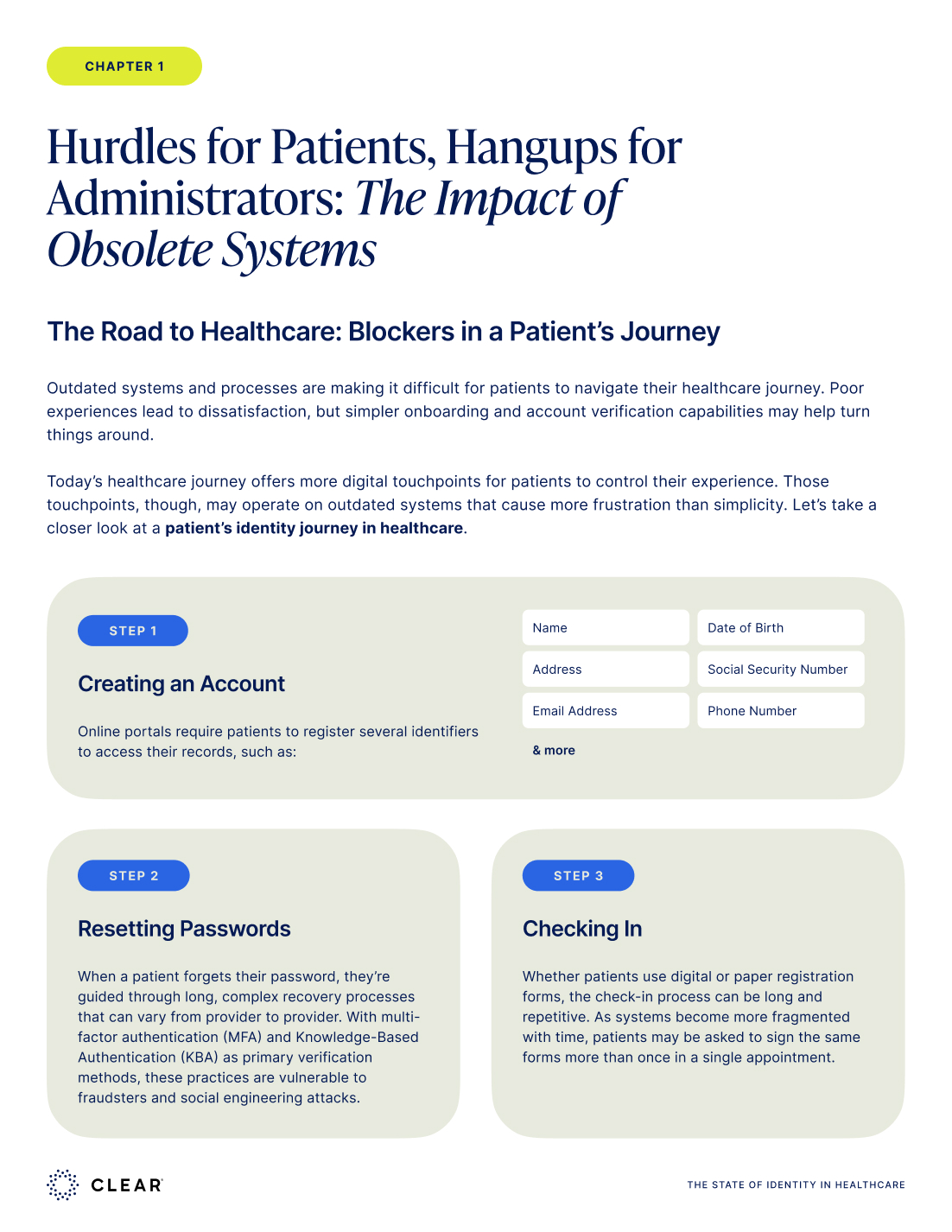


A major bank's AML program flagged thousands of suspicious transactions, but investigators discovered a fundamental problem: They couldn't confidently verify whether the account holders were actually who they claimed to be. The bank’s advanced monitoring systems were only as good as the identity data they relied on—and that foundation was shaky.
This scenario highlights a critical truth about anti-money laundering (AML) programs: Even the most sophisticated compliance systems depend on one fundamental capability—knowing who your customers really are.
Understanding the five core types of AML in banking helps banks see where identity assurance fits into their broader compliance strategy. Identity assurance isn’t an AML solution itself, but rather the foundation that makes all AML programs more effective. While specialized AML tools handle monitoring and reporting, identity assurance ensures these systems start with accurate, verified data.
Five Types of AML in Banking
- Customer Due Diligence: where identity assurance begins
- Transaction Monitoring: the identity context gap
- Enhanced Due Diligence: streamlining without compromising
- Suspicious Activity Reporting: better data, better reports
- Risk-Based Approach: adapting to change
1. Customer Due Diligence: Where Identity Assurance Begins
Customer Due Diligence (CDD) serves as the first line of defense in AML compliance. CDD is the process of verifying customer identities and assessing their risk profiles, as required by the Banking Secrecy Act (BSA) regulations. To accurately pinpoint their risk level, banks have to uncover the nature and purpose of the customers’ relationships with the bank.
The Identity Challenge
Traditional CDD processes face three significant hurdles:
- Manual verification processes create gaps that criminals can exploit
- Static checks that become outdated quickly as customer circumstances change
- Identity fraud that undermines the effectiveness of CDD from the very beginning
These challenges compound when banks rely on outdated verification methods. Document forgery has become increasingly sophisticated, and synthetic identities—where criminals combine real and fake information—slip through traditional checks.
Strong identity assurance doesn't replace CDD processes—it provides the reliable identity data that makes CDD more effective.
Modern identity solutions help banks establish higher confidence in customer identities from day one. When banks start with verified, high-quality identity data, their entire AML program benefits from this stronger foundation. Identity assurance strengthens the inputs to CDD, while specialized AML tools handle the risk assessment and monitoring aspects.
2. Transaction Monitoring: The Identity Context Gap
Transaction monitoring involves the continuous, automated review of customer transactions to detect suspicious patterns. Federal regulations require banks to maintain systems that monitor transactions and flag any unusual activity.
The Blind Spot
While transaction monitoring systems excel at detecting unusual patterns, they often lack real-time identity context. And this is a significant barrier, since industry experts note that AML systems “rely on accurate, complete, and timely data to effectively detect suspicious activities.”
This means that criminals often exploit identity vulnerabilities (e.g. using stolen or fake IDs) so that a transaction appears normal.
Without strong identity assurance, even sophisticated pattern detection algorithms struggle to distinguish legitimate activity from fraud. Banks face several obstacles:
- High false positive rates when identity confidence is low
- Difficulty distinguishing legitimate users from bad actors with stolen credentials
- Account takeover scenarios that bypass monitoring entirely
A criminal using stolen credentials might exhibit normal transaction patterns initially, evading detection until significant damage occurs.
Modern identity solutions complement transaction monitoring by confirming that the person initiating a transaction is the legitimate account holder.
By providing real-time validation at critical transaction points, banks gain an additional security layer that enhances existing monitoring capabilities, reducing uncertainty about who's behind the transaction.
3. Enhanced Due Diligence: Streamlining without Compromising
Enhanced Due Diligence (EDD) requires intensive verification for customers who present elevated risk, such as politically exposed persons (PEPs), customers from high-risk geographic locations, cash-intensive businesses, non-profit organizations, or customers with complex ownership structures.
Traditional Friction Points
Conventional EDD processes create significant operational and customer experience challenges:
- Multiple document requests that frustrate legitimate customers
- Lengthy manual reviews that consume compliance resources
- Extended onboarding times that lead to customer abandonment
This creates an unfortunate dynamic where legitimate customers face unnecessary hurdles while sophisticated criminals game the system with forged documents or synthetic identities.
Strong identity assurance helps banks gather reliable identity data more efficiently. When banks have high confidence in a customer's identity through modern verification methods, they can focus EDD resources on actual risk assessment. This includes source of funds, PEP status, or transaction patterns, rather than re-verifying basic identity information.
4. Suspicious Activity Reporting: Better Data, Better Reports
Suspicious Activity Reporting (SAR) requires banks to file reports within 30 days of detecting potentially suspicious activities that may involve money laundering, BSA violations, or terrorist financing.
Current Challenges
SAR processes suffer from identity-related inefficiencies that impact both compliance and law enforcement effectiveness:
- Incomplete identity data that makes accurate reporting difficult
- False positives that waste investigation resources
- Teams struggling to link activities across accounts or institutions
- Basic identity confirmation that delays reporting
These challenges can lead to missed deadlines or incomplete reports that fail to provide actionable intelligence.
When banks have stronger identity assurance, their SAR processes benefit from several improvements, including having more accurate customer information from the start, providing higher confidence in linking activities to individuals. This reduces time spent on identity verification during investigations and produces better quality reports for law enforcement.
Strong identity data acts as a force multiplier, enabling investigators to focus on analyzing patterns rather than struggling with basic identity questions.
5. Risk-based approach: Adapting to change
The risk-based approach (RBA) tailors AML controls based on assessed risk levels—applying more intensive resources to higher-risk customers and less to lower-risk ones. This allows banks to allocate their compliance resources effectively while maintaining robust controls where needed most.
Evolution Challenge
Traditional RBA implementations face a critical limitation: risk profiles change, but identity confidence often remains static. A customer verified years ago might have been a victim to identity theft or had credentials compromised—yet many banks still rely on that original verification.
This creates the following vulnerabilities:
- Risk scores based on outdated identity data
- Inability to detect compromised identities
- Missed opportunities to adjust controls based on changing confidence levels
As with all of the other types of AML in banking, these vulnerabilities can be reduced by layering on better identity assurance.
Dynamic identity assurance provides:
- Real-time confidence signals reflecting current identity status
- Consistent data across all touchpoints
- Better inputs for risk scoring models
- Adaptive security that responds to changing threats.
Modern identity platforms can provide confidence signals that complement risk-based AML systems. A sudden drop in identity confidence might trigger enhanced monitoring, while consistently high confidence could support streamlined processes for low-risk customers.
How identity strengthens all types of AML in banking
Banks invest heavily in AML technology but often overlook the identity foundation these systems depend on. Even the most advanced monitoring tools need accurate, complete, and timely data to work properly. This oversight creates a cascading effect where weaknesses in identity verification undermine each of the types of AML in banking.
Banks should consider a layered strategy:
- Start with identity assurance as the foundation—ensure customer identity data is accurate and current
- Layer specialized AML tools on top—build monitoring and reporting on this solid foundation
- Ensure seamless data flow between systems—integrate identity confidence signals into AML workflows
- Continuously improve—use insights from AML processes to enhance identity verification strategies
By viewing identity assurance as the enabler rather than just another compliance checkbox, banks can build AML programs that are both more effective and more efficient. In the fight against financial crime, knowing who you're dealing with isn't just the first step — it's the foundation everything else builds upon. Learn more about CLEAR1 to reinforce your identity foundation.
A major bank's AML program flagged thousands of suspicious transactions, but investigators discovered a fundamental problem: They couldn't confidently verify whether the account holders were actually who they claimed to be. The bank’s advanced monitoring systems were only as good as the identity data they relied on—and that foundation was shaky.
This scenario highlights a critical truth about anti-money laundering (AML) programs: Even the most sophisticated compliance systems depend on one fundamental capability—knowing who your customers really are.
Understanding the five core types of AML in banking helps banks see where identity assurance fits into their broader compliance strategy. Identity assurance isn’t an AML solution itself, but rather the foundation that makes all AML programs more effective. While specialized AML tools handle monitoring and reporting, identity assurance ensures these systems start with accurate, verified data.
Five Types of AML in Banking
- Customer Due Diligence: where identity assurance begins
- Transaction Monitoring: the identity context gap
- Enhanced Due Diligence: streamlining without compromising
- Suspicious Activity Reporting: better data, better reports
- Risk-Based Approach: adapting to change
1. Customer Due Diligence: Where Identity Assurance Begins
Customer Due Diligence (CDD) serves as the first line of defense in AML compliance. CDD is the process of verifying customer identities and assessing their risk profiles, as required by the Banking Secrecy Act (BSA) regulations. To accurately pinpoint their risk level, banks have to uncover the nature and purpose of the customers’ relationships with the bank.
The Identity Challenge
Traditional CDD processes face three significant hurdles:
- Manual verification processes create gaps that criminals can exploit
- Static checks that become outdated quickly as customer circumstances change
- Identity fraud that undermines the effectiveness of CDD from the very beginning
These challenges compound when banks rely on outdated verification methods. Document forgery has become increasingly sophisticated, and synthetic identities—where criminals combine real and fake information—slip through traditional checks.
Strong identity assurance doesn't replace CDD processes—it provides the reliable identity data that makes CDD more effective.
Modern identity solutions help banks establish higher confidence in customer identities from day one. When banks start with verified, high-quality identity data, their entire AML program benefits from this stronger foundation. Identity assurance strengthens the inputs to CDD, while specialized AML tools handle the risk assessment and monitoring aspects.
2. Transaction Monitoring: The Identity Context Gap
Transaction monitoring involves the continuous, automated review of customer transactions to detect suspicious patterns. Federal regulations require banks to maintain systems that monitor transactions and flag any unusual activity.
The Blind Spot
While transaction monitoring systems excel at detecting unusual patterns, they often lack real-time identity context. And this is a significant barrier, since industry experts note that AML systems “rely on accurate, complete, and timely data to effectively detect suspicious activities.”
This means that criminals often exploit identity vulnerabilities (e.g. using stolen or fake IDs) so that a transaction appears normal.
Without strong identity assurance, even sophisticated pattern detection algorithms struggle to distinguish legitimate activity from fraud. Banks face several obstacles:
- High false positive rates when identity confidence is low
- Difficulty distinguishing legitimate users from bad actors with stolen credentials
- Account takeover scenarios that bypass monitoring entirely
A criminal using stolen credentials might exhibit normal transaction patterns initially, evading detection until significant damage occurs.
Modern identity solutions complement transaction monitoring by confirming that the person initiating a transaction is the legitimate account holder.
By providing real-time validation at critical transaction points, banks gain an additional security layer that enhances existing monitoring capabilities, reducing uncertainty about who's behind the transaction.
3. Enhanced Due Diligence: Streamlining without Compromising
Enhanced Due Diligence (EDD) requires intensive verification for customers who present elevated risk, such as politically exposed persons (PEPs), customers from high-risk geographic locations, cash-intensive businesses, non-profit organizations, or customers with complex ownership structures.
Traditional Friction Points
Conventional EDD processes create significant operational and customer experience challenges:
- Multiple document requests that frustrate legitimate customers
- Lengthy manual reviews that consume compliance resources
- Extended onboarding times that lead to customer abandonment
This creates an unfortunate dynamic where legitimate customers face unnecessary hurdles while sophisticated criminals game the system with forged documents or synthetic identities.
Strong identity assurance helps banks gather reliable identity data more efficiently. When banks have high confidence in a customer's identity through modern verification methods, they can focus EDD resources on actual risk assessment. This includes source of funds, PEP status, or transaction patterns, rather than re-verifying basic identity information.
4. Suspicious Activity Reporting: Better Data, Better Reports
Suspicious Activity Reporting (SAR) requires banks to file reports within 30 days of detecting potentially suspicious activities that may involve money laundering, BSA violations, or terrorist financing.
Current Challenges
SAR processes suffer from identity-related inefficiencies that impact both compliance and law enforcement effectiveness:
- Incomplete identity data that makes accurate reporting difficult
- False positives that waste investigation resources
- Teams struggling to link activities across accounts or institutions
- Basic identity confirmation that delays reporting
These challenges can lead to missed deadlines or incomplete reports that fail to provide actionable intelligence.
When banks have stronger identity assurance, their SAR processes benefit from several improvements, including having more accurate customer information from the start, providing higher confidence in linking activities to individuals. This reduces time spent on identity verification during investigations and produces better quality reports for law enforcement.
Strong identity data acts as a force multiplier, enabling investigators to focus on analyzing patterns rather than struggling with basic identity questions.
5. Risk-based approach: Adapting to change
The risk-based approach (RBA) tailors AML controls based on assessed risk levels—applying more intensive resources to higher-risk customers and less to lower-risk ones. This allows banks to allocate their compliance resources effectively while maintaining robust controls where needed most.
Evolution Challenge
Traditional RBA implementations face a critical limitation: risk profiles change, but identity confidence often remains static. A customer verified years ago might have been a victim to identity theft or had credentials compromised—yet many banks still rely on that original verification.
This creates the following vulnerabilities:
- Risk scores based on outdated identity data
- Inability to detect compromised identities
- Missed opportunities to adjust controls based on changing confidence levels
As with all of the other types of AML in banking, these vulnerabilities can be reduced by layering on better identity assurance.
Dynamic identity assurance provides:
- Real-time confidence signals reflecting current identity status
- Consistent data across all touchpoints
- Better inputs for risk scoring models
- Adaptive security that responds to changing threats.
Modern identity platforms can provide confidence signals that complement risk-based AML systems. A sudden drop in identity confidence might trigger enhanced monitoring, while consistently high confidence could support streamlined processes for low-risk customers.
How identity strengthens all types of AML in banking
Banks invest heavily in AML technology but often overlook the identity foundation these systems depend on. Even the most advanced monitoring tools need accurate, complete, and timely data to work properly. This oversight creates a cascading effect where weaknesses in identity verification undermine each of the types of AML in banking.
Banks should consider a layered strategy:
- Start with identity assurance as the foundation—ensure customer identity data is accurate and current
- Layer specialized AML tools on top—build monitoring and reporting on this solid foundation
- Ensure seamless data flow between systems—integrate identity confidence signals into AML workflows
- Continuously improve—use insights from AML processes to enhance identity verification strategies
By viewing identity assurance as the enabler rather than just another compliance checkbox, banks can build AML programs that are both more effective and more efficient. In the fight against financial crime, knowing who you're dealing with isn't just the first step — it's the foundation everything else builds upon. Learn more about CLEAR1 to reinforce your identity foundation.























